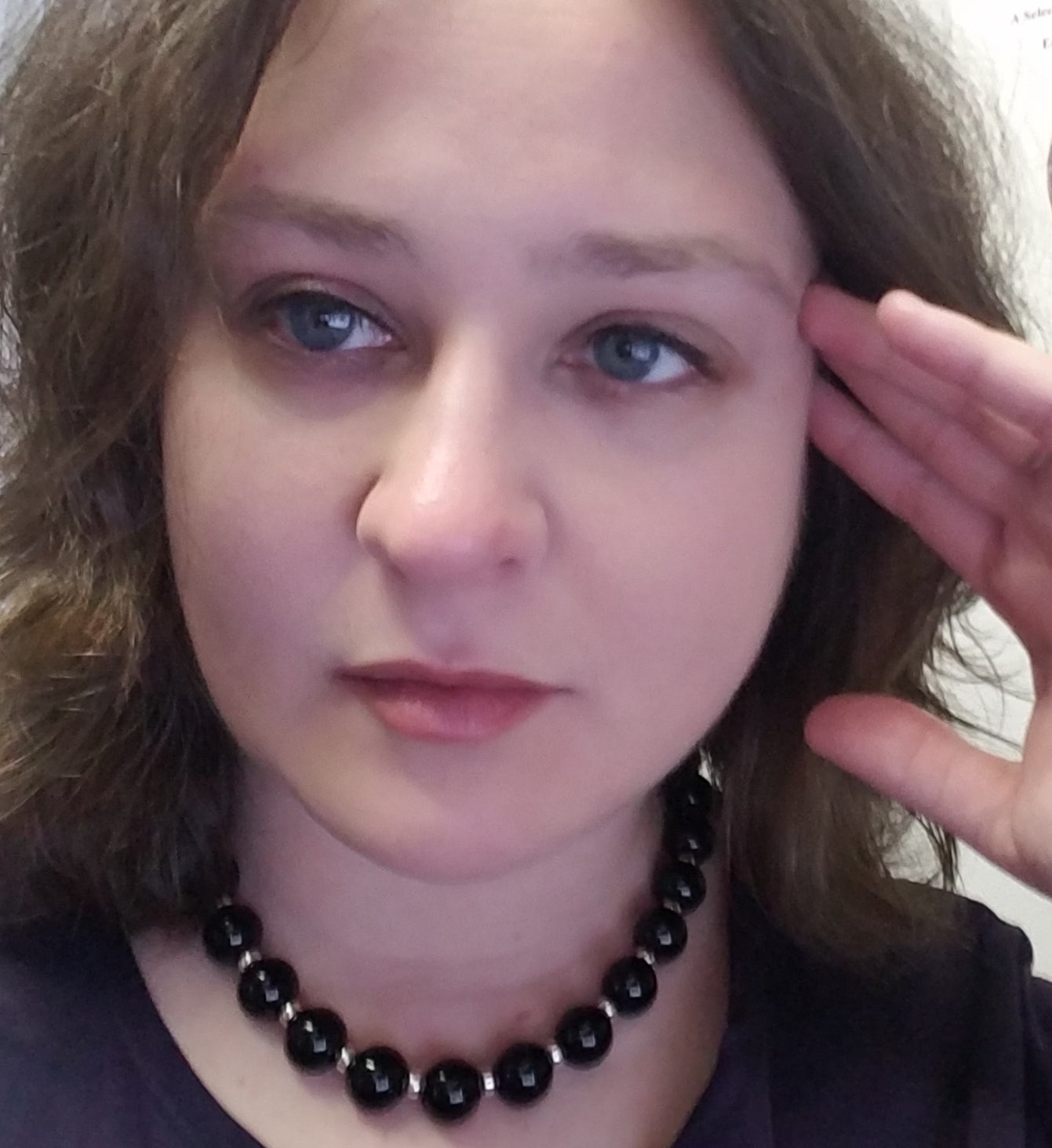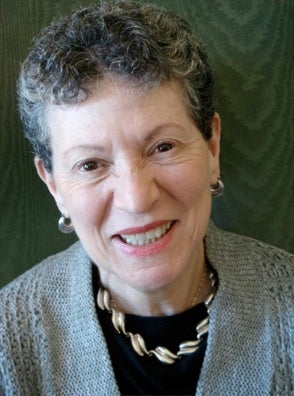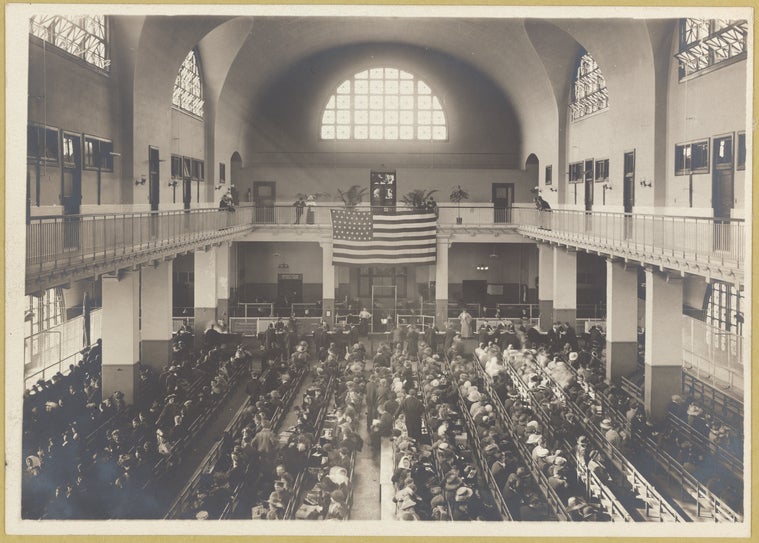Delving into HISTORY NOW Past and Present with Managing Editor Nicole Seary
Posted by Gilder Lehrman Staff on Wednesday, 10/31/2018
The Publications Department: Nicole Seary
 Nicole Seary is Senior Editor at the Gilder Lehrman Institute of American History and the managing editor of History Now, the Institute’s online journal. Published three times a year, History Now offers the latest in historical scholarship to K−12 teachers, students, and general readers. Each issue is organized around a major theme in American history and features essays by leading experts in the field. Since 2004, fifty-two issues and 269 short, informative essays have been published in History Now on the Gilder Lehrman website.
Nicole Seary is Senior Editor at the Gilder Lehrman Institute of American History and the managing editor of History Now, the Institute’s online journal. Published three times a year, History Now offers the latest in historical scholarship to K−12 teachers, students, and general readers. Each issue is organized around a major theme in American history and features essays by leading experts in the field. Since 2004, fifty-two issues and 269 short, informative essays have been published in History Now on the Gilder Lehrman website.
What are the origins of History Now?
History Now was launched by the Institute in Fall 2004 with two main objectives: to promote the study and love of American history, and to give educators and students access to a wide variety of resources, including essays by major historians on key topics, lesson plans, interactive features, and spotlighted primary sources from the Gilder Lehrman Collection. In her introduction to the very first issue, the journal’s general editor, Carol Berkin, wrote, “Students deserve what American history can give them: an appreciation of the past; a working knowledge of their government; and skills they can take with them out of the classroom and into their adult lives. History Now dedicates itself to these goals and to the call—issued by the founders more than two centuries ago—for an informed and enlightened citizenry upon which to base a growing democracy.” Fourteen years on, the journal still adheres to these aims, reaching thousands of Gilder Lehrman Affiliate School teachers and other readers worldwide.
What is your role in editing the journal?
My professional involvement with History Now began in 2014, when I was appointed managing editor of the journal. Working closely with Carol Berkin and the contributing scholars, I copyedit and fact-check all submissions, coordinate with staff at the Institute to produce each issue online, and drive the project schedule to ensure timely publication. In February 2018, I was delighted to work with Professor Berkin and other colleagues to publish “Frederick Douglass at 200”—a landmark issue of History Now, not only because it commemorated the Douglass bicentennial, but also because it was the journal’s fiftieth issue. The issue marked a personal milestone as well; it was my tenth.
Do you choose the contributors first and then let them write about whatever they want? Do you accept proposals first and then select writers based on their authority in the field? What is the process?
 As soon as Professor Berkin and I determine the topic for an upcoming issue, we begin to compile a list of preeminent historians who write on that topic. We then write to the historians individually to invite them to contribute, making sure to suggest a specific theme for each requested essay. If a historian wishes to write on a theme other than the one we’ve recommended, then we carefully consider the proposal and accept it as long as it serves the issue’s purpose. Our main requirement is for contributors to keep their essays brief and conversational in tone so that their work will be accessible to readers at every level, including middle and high school students.
As soon as Professor Berkin and I determine the topic for an upcoming issue, we begin to compile a list of preeminent historians who write on that topic. We then write to the historians individually to invite them to contribute, making sure to suggest a specific theme for each requested essay. If a historian wishes to write on a theme other than the one we’ve recommended, then we carefully consider the proposal and accept it as long as it serves the issue’s purpose. Our main requirement is for contributors to keep their essays brief and conversational in tone so that their work will be accessible to readers at every level, including middle and high school students.
Is diversity of voice part of your selection process? How is this reflected?
Diversity not only of voice, but of historical inquiry and interpretive approach, is essential to the ethos of History Now. Since 2004 a total of 238 scholars have contributed to History Now, each of them highly qualified to speak to facets of the American experience past and present, from the Civil Rights Movement (Issue No. 8 [Summer 2006] and Issue No. 41 [Winter 2015]), to American Indian history (Issue No. 28 [Summer 2011]), to the progress of women in leadership (Issue No. 47 [Winter 2017]). The first issue of 2019, already in the planning stages, will be on the Hispanic legacy in American history, and will focus on the Spanish-language holdings of the Gilder Lehrman Collection, including a 1552 tract by Bartolomé de las Casas on the wrongs perpetrated against American Indians in the New World, a 1776 report from Spanish California on efforts to move settlers to newly founded San Francisco, and an 1835 proclamation declaring Los Angeles a Mexican city. The issue will provide both context and commentary so that teachers can integrate these important primary sources into their lessons with ease.
The current issue is on the history of US immigration laws. What might surprise the reader about this topic?
 While many Americans know that the Chinese Exclusion Act of 1882 was the first federal measure with a deportation provision, fewer realize, as History Now contributor Hidetaka Hirota points out, that individual state laws in the 1850s regulated immigration by deporting poor foreigners who were regarded by nativists as a burden on the public weal. Professor Hirota recounts the dramatic story of an impoverished Irish-born woman, Mary Williams, who in 1855 was deported from Massachusetts along with her American-born daughter, Bridget. The Irish-American press quickly condemned such deportations of American-born or fully naturalized citizens, who were, to quote one newspaper, banished “across the seas for the crime of being poor.” To read Professor Hirota’s essay in full, please visit the current issue of History Now at https://www.gilderlehrman.org/history-now.
While many Americans know that the Chinese Exclusion Act of 1882 was the first federal measure with a deportation provision, fewer realize, as History Now contributor Hidetaka Hirota points out, that individual state laws in the 1850s regulated immigration by deporting poor foreigners who were regarded by nativists as a burden on the public weal. Professor Hirota recounts the dramatic story of an impoverished Irish-born woman, Mary Williams, who in 1855 was deported from Massachusetts along with her American-born daughter, Bridget. The Irish-American press quickly condemned such deportations of American-born or fully naturalized citizens, who were, to quote one newspaper, banished “across the seas for the crime of being poor.” To read Professor Hirota’s essay in full, please visit the current issue of History Now at https://www.gilderlehrman.org/history-now.
Other than editing this journal, what else do you do at Gilder Lehrman?
Since 2013 I have coordinated the Gilder Lehrman Scholarly Fellowship Program, which provides annual short-term research awards in the amount of $3000 each to doctoral candidates, college and university faculty members, and independent scholars working in the field of American history. Fellows are expected to pursue their research at archives in New York City, such as the Gilder Lehrman Collection, the New York Public Library, the New-York Historical Society, the Schomburg Center, and the Columbia University Libraries. In May 2018, the Scholarly Fellowship Program received close to 100 applications, including thirteen from foreign countries. From this large pool, the fellowship committee selected ten finalists, all of whom will visit the Institute’s office in New York City by the end of June 2019 to report on the progress of their projects. The Institute has awarded more than 650 fellowships since 1994, and continues to expand the program in exciting new ways. For instance, the Institute recently established a partnership with the Rothermere American Institute at Oxford University, offering the recipients of Rothermere’s travel grants the opportunity to visit the Gilder Lehrman office in New York, to attend Gilder Lehrman book prize events, and to obtain access to American History, 1493−1945, an impressive database published by Adam Matthew Digital that contains more than 50,000 documents from the Gilder Lehrman Collection. Developments such as this partnership provide a powerful reminder that the Gilder Lehrman Institute serves not just K−12 teachers, students, and the general public, but also scholars at all stages of their careers.